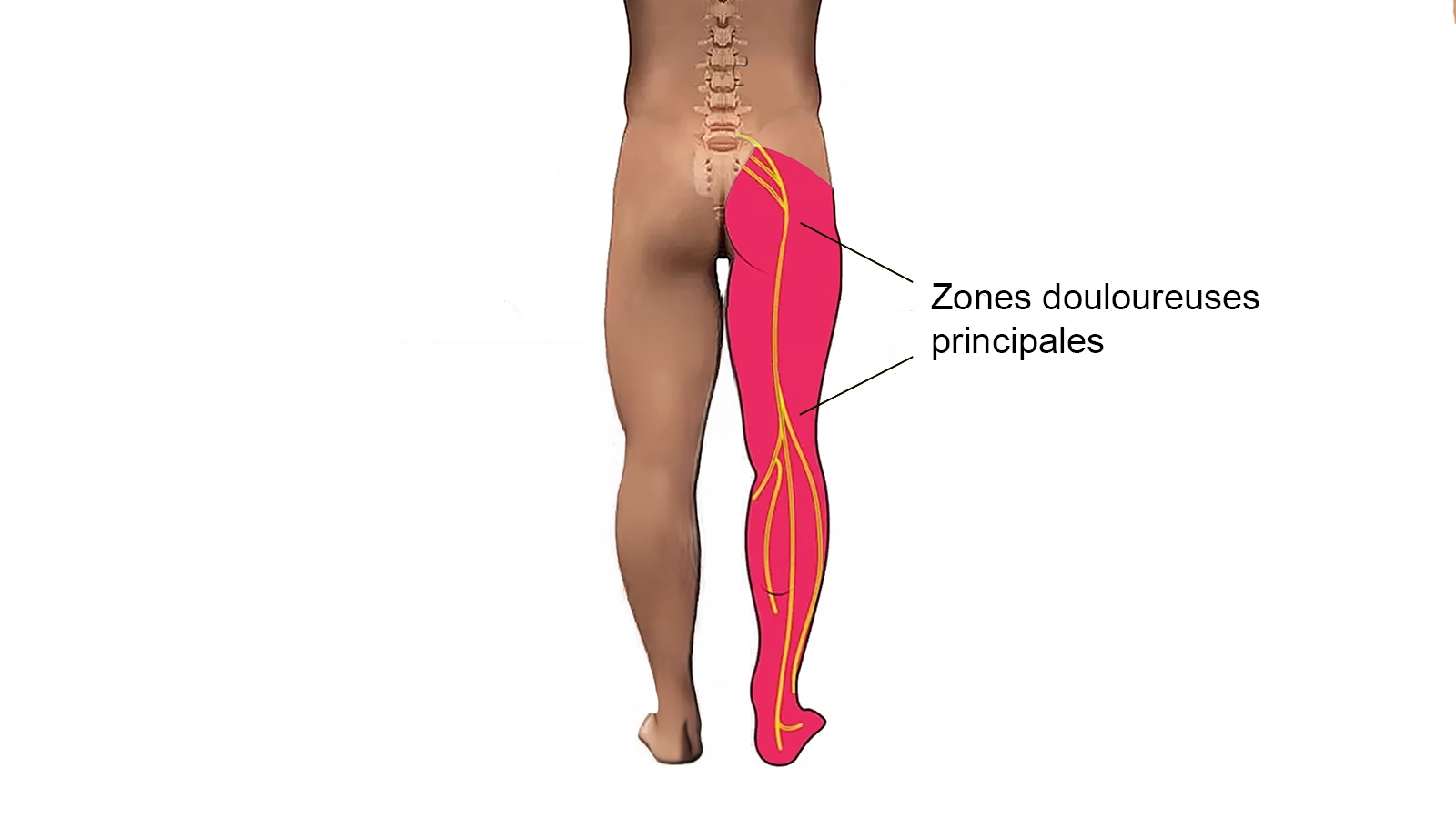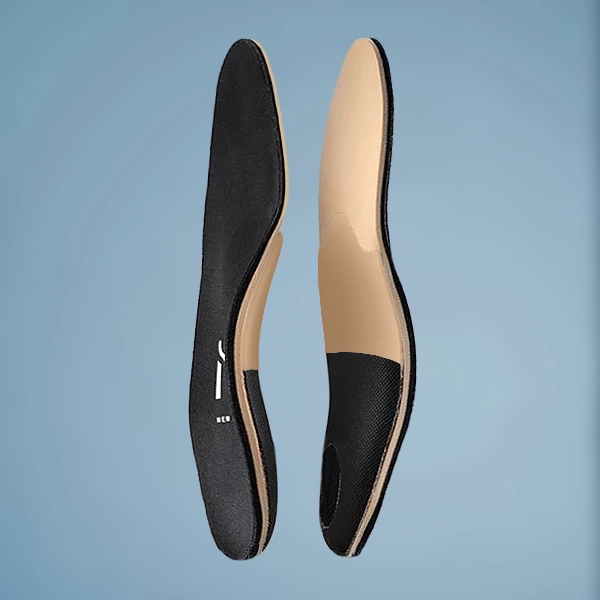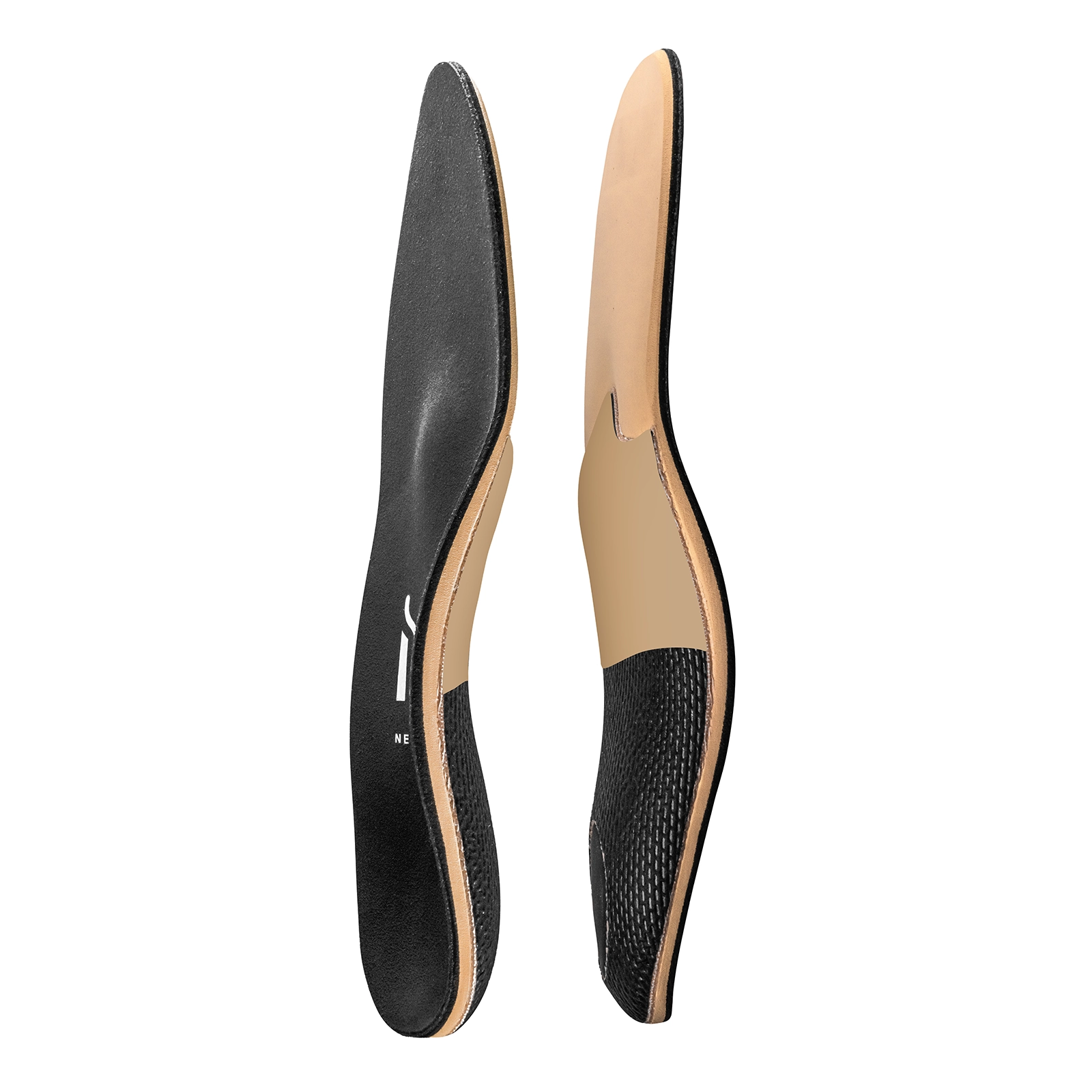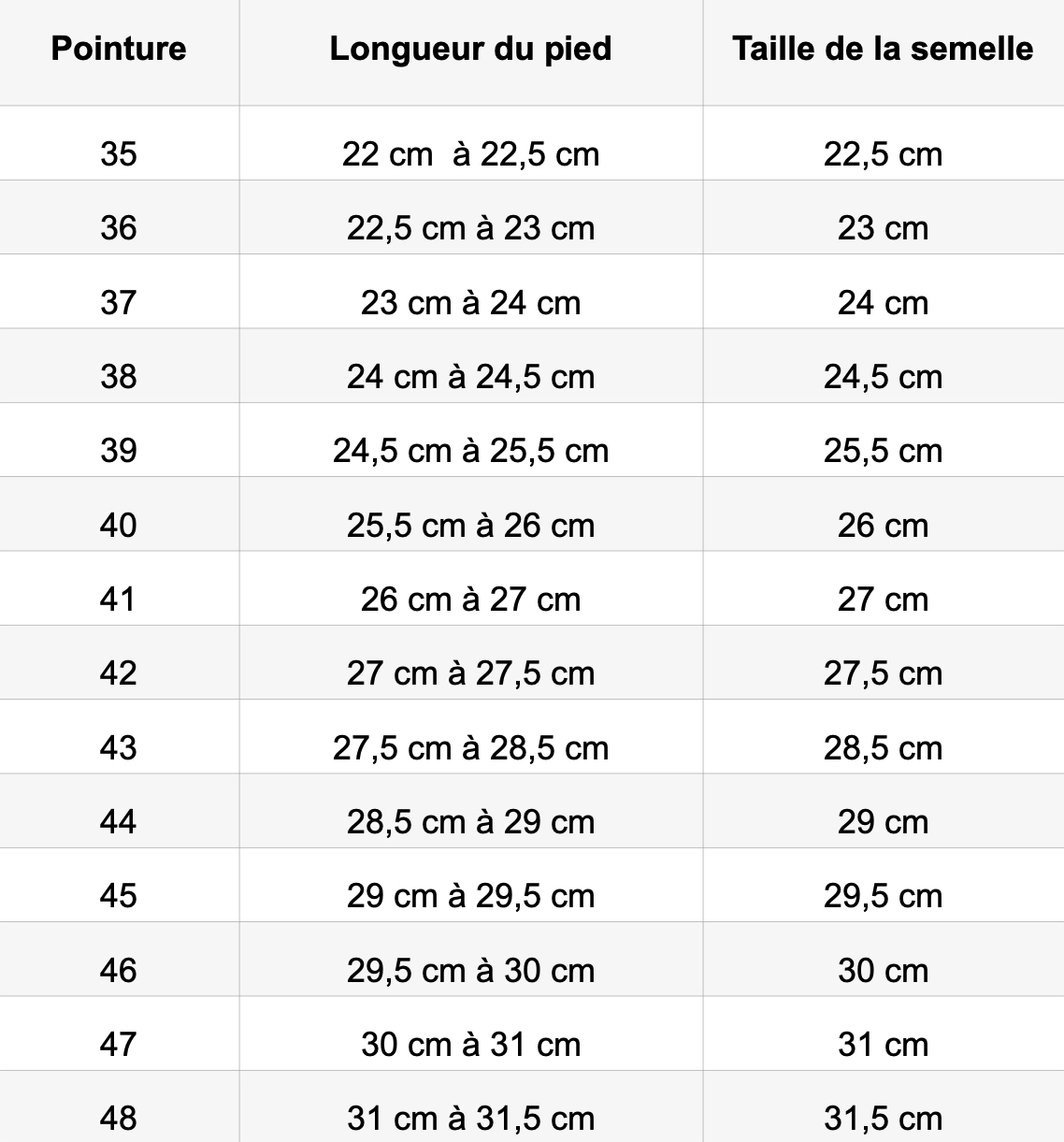Cruralgia
the complete guide
- Published on
- By New Equilibre
Cruralgia, also known as crural neuralgia, is a painful condition caused by compression or inflammation of the crural nerve. It manifests as pain radiating down the thigh, often accompanied by tingling, pins and needles, and sometimes even numbness. This condition is often linked to a herniated disc, lumbago or damage to the intervertebral disc, which compresses the nerve root in the lumbar spine.
Do you suffer from cruralgia and play sports? Find the right solution in just one click:
If not treated promptly, cruralgia can lead to muscle weakness and even partial paralysis of the leg. Fortunately, there are several solutions to relieve this pain: orthopedic inserts, natural treatments and medication.
In some cases, infiltration may be necessary to reduce chronic inflammation and improve mobility of the femur and hip.

On this page, discover solutions and products specially designed to help you relieve your cruralgia and adopt a more comfortable posture on a daily basis. New Equilibre offers you the best alternatives to soothe your pain and regain your well-being.
What is curalgia?
Where does cruralgia pain occur?
The pain of cruralgia is mainly located along the anterior aspect of the thigh, sometimes descending to the knee or even the foot. It may also radiate into the inguinal region or down the back, depending on the severity of the condition and the specific location of crural nerve compression or irritation.
In summary, cruralgia pain is generally concentrated along the crural nerve pathway, from the lumbar spine to the knee, and may extend in different directions depending on the severity and location of nerve compression.
What's the difference between the crural nerve and the sciatic nerve?
The crural nerve and the sciatic nerve are two distinct nerves that form part of the peripheral nervous system and play different roles in the innervation and control of muscles and sensations in the lower limbs. Here are the main differences between these two nerves:
Anatomical path :
- The crural nerve originates from the nerve roots of the lumbar spinal cord, mainly at levels L2 to L4, and crosses the pelvis before descending along the anterior aspect of the thigh.
- The sciatic nerve originates from the nerve roots of the sacral spinal cord, mainly at levels L4 to S3, and crosses the lower back, buttocks and posterior thigh, dividing into branches that innervate the leg and foot.
Innervated zone :
- The crural nerve innervates mainly the thigh (quadriceps) and hip muscles, as well as the skin of the anterior thigh.
- The sciatic nerve innervates most leg muscles, including the thigh muscles, the muscles of the hind leg and the muscles of the foot and toes, as well as the skin of the leg, foot and toes.
Function and feel :
- The crural nerve mainly controls hip and knee movements, as well as sensation in the anterior thigh region.
- The sciatic nerve controls movement of the thigh, leg and foot muscles, as well as sensation in most of the leg, foot and toes.
Associated conditions :
- Compression or irritation of the crural nerve can lead to a condition called cruralgia, characterized by pain along the anterior aspect of the thigh.
- Compression or irritation of the sciatic nerve can lead to a condition called sciatica, characterized by pain that runs down the back of the thigh and leg, sometimes to the foot.
Although the crural and sciatic nerves are both important nerves that control movement and sensation in the lower limbs, they differ in their anatomical course, the area they innervate and the symptoms associated with their compression or irritation.
The 100% Made in France solution
Order your insoles to relieve cruralgia in just a few clicks via our online store!
Fast, free delivery to mainland France.
What are the symptoms of cruralgia?
The symptoms of cruralgia can vary from person to person, depending on the severity of compression or irritation of the crural nerve. However, here are the most common symptoms associated with this condition:
Pain along the thigh: Pain is the most characteristic symptom of cruralgia. It is generally felt along the front of the thigh, but can also radiate to the knee or even the foot. Pain can be described as throbbing, burning, electric or stinging.
Sensation of tingling or numbness: Individuals with cruralgia may experience sensations of tingling or numbness along the course of the crural nerve, particularly in the thigh, knee and sometimes foot.
Muscle weakness: Severe cruralgia can lead to muscle weakness in the affected leg. Muscles innervated by the crural nerve, such as the quadriceps, may become less effective, leading to difficulty walking or maintaining stability.
Pain aggravated by certain positions: Cruralgia pain can be exacerbated by certain positions or movements, including prolonged sitting, bending the trunk forward, or sudden movements such as coughing or sneezing.
Increased pain at night: Some individuals may experience increased pain at night, which can disrupt sleep and lead to poor sleep quality.
It's important to note that cruralgia symptoms can vary in intensity and frequency depending on the individual, and can be exacerbated by factors such as physical activity, stress or incorrect posture.
Orthopedic insoles to relieve cruralgia :
The orthopedic insoles can be a highly effective option for relieving cruralgia. That's why we've created a model of insoles specifically for this condition, offering plantar support and helping to correct postural imbalances, providing rapid pain relief.
Posture correction: Orthopedic insoles are designed to correctly support the arch of the foot and maintain optimal body posture. By correcting postural imbalances, they reduce pressure on the spine and crural nerve, helping to relieve the pain associated with cruralgia.
Reducing Muscle Tension: Orthopedic insoles help distribute body weight evenly over the feet, which can reduce muscle tension in the legs, hips and lower back. By reducing muscle tension, they help relieve the pain and discomfort associated with cruralgia.
Walking Stabilization: Orthopedic insoles stabilize walking by providing extra support to the feet and reducing excessive foot and ankle movement. A more stable gait can reduce stress on the spine and crural nerve.
Shock absorption: Made from shock-absorbing materials, orthopedic insoles absorb shocks and reduce pressure on feet and joints. This can be particularly beneficial for cruralgia sufferers, reducing the impact of daily activities on the crural nerve.
Treatments for huralgia
For the treatment of cruralgia, there are both natural and medicated approaches that can help relieve pain and improve functionality. Here's a detailed list of natural and medicated treatments for cruralgia:
Natural treatments :
Stretching exercises: Regular stretching can help loosen tight muscles around the crural nerve and reduce nerve compression. Stretches targeting the muscles of the hip, thigh and lower back can be particularly beneficial.
Muscle strengthening: Strengthening core, hip and leg muscles can help stabilize the spine and reduce pressure on the crural nerve. Exercises such as squats, lunges and bridge exercises can help.
Yoga and Pilates: These disciplines focus on posture, flexibility and muscle strengthening, which can help relieve pain and prevent cruralgia relapses.
Acupuncture: Some studies suggest that acupuncture, a traditional Chinese medicine practice involving the insertion of fine needles into specific points on the body, may be effective in relieving pain associated with cruralgia.
Therapeutic massage: Massage can help relax tight muscles, improve blood circulation and reduce pain associated with cruralgia. Gentle massage of the hip, thigh and lower back muscles can be beneficial.
Medicinal treatments
Non-steroidal anti-inflammatory drugs (NSAIDs): Medications such as ibuprofen, naproxen and diclofenac can help reduce inflammation around the crural nerve and relieve the pain associated with cruralgia.
Analgesics: Medications such as paracetamol can be used to relieve the mild to moderate pain associated with cruralgia.
Muscle relaxants: Muscle relaxants such as cyclobenzaprine can be prescribed to help relax tense muscles and relieve muscle spasms associated with cruralgia.
Corticosteroids: Corticosteroid injections can be administered to the area around the crural nerve to reduce inflammation and relieve pain associated with cruralgia, particularly if other treatments are not effective.
Opioid analgesics: In cases of severe cruralgia resistant to other treatments, opioid analgesics such as codeine or morphine may be prescribed to relieve pain. However, they are generally used with caution, due to the risk of dependence and side effects.
New Equilibre insoles have been tested and approved by thousands of users. Their effectiveness is clinically proven. It's easy to order your insoles exclusively from our online store, and regain the comfort your feet deserve.
Free delivery to Metropolitan France, within 2 working days.
Discover our article " How can orthotics relieve cruralgia? " To better understand their role in the treatment of this pathology.
Is it okay to walk with cruralgia?
Walking can be beneficial for some cruralgia sufferers, but this depends on the severity of symptoms and individual tolerance to physical activity. Here are some points to consider about walking and cruralgia:
Improved blood circulation: Regular walking can promote blood circulation in the legs, which can help reduce inflammation and relieve pain associated with cruralgia.
Healing stimulation: Light activity, such as walking, can stimulate healing by encouraging blood flow to the affected area, which can promote recovery of damaged tissue.
Mobility maintenance: Walking can help maintain joint and muscle mobility, which can prevent the stiffness and muscle atrophy associated with prolonged inactivity.
Muscle strengthening: Regular walking can help strengthen leg and hip muscles, which can improve stability and reduce the risk of future injury.
However, it's important to note that walking may not be recommended in all cases of cruralgia, especially when pain is severe or incapacitating. Here are some important considerations:
Pain: If walking aggravates pain or causes excessive discomfort, it's best to limit physical activity and rest until the pain subsides.
Limitations: Some people may experience increased pain when walking on hard or uneven surfaces. In this case, it may be helpful to walk on softer, flatter surfaces, such as grass or carpet.
Medical consultation: Before starting an exercise program, it's advisable to consult a healthcare professional for personalized advice based on symptom severity and general health.
In summary, walking can benefit some cruralgia sufferers by promoting blood circulation, stimulating healing, maintaining mobility and strengthening muscles. However, it's important to respect one's limits and consult a health professional before starting any exercise program, especially if pain is severe or persistent.
What sports can I do with cruralgia?
When suffering from cruralgia, it's essential to choose physical activities that don't exacerbate symptoms and that help strengthen muscles, improve flexibility and promote blood circulation without putting excessive pressure on the crural nerve. Here are some examples of sports and exercises that can benefit cruralgia sufferers:
Swimming: Swimming is a low-impact activity that strengthens muscles throughout the body without putting pressure on joints. The fluid movements in the water can help improve flexibility and relieve the pain associated with cruralgia.
Cycling: Cycling on a stationary or adapted bicycle can be a good option for cruralgia sufferers, as it provides cardiovascular exercise without excessive impact on the joints.
Yoga: Yoga can help strengthen muscles, improve flexibility and promote relaxation. Yoga poses that focus on stretching the muscles of the hip, thigh and lower back can be particularly beneficial for cruralgia sufferers.
Pilates: Pilates is a form of exercise that focuses on strengthening the deep muscles of the core, hips and legs while improving stability and posture. Pilates exercises can help relieve the pain associated with cruralgia by strengthening the muscles that support the spine.
Nordic walking: Nordic walking involves the use of special walking poles that help strengthen the arms and stabilize the body while walking. This activity can benefit cruralgia sufferers by providing cardiovascular exercise while relieving pressure on the joints.
It's important to choose activities that suit your fitness level and don't cause excessive pain or discomfort.
How long does cruralgia last?
The duration of cruralgia can vary considerably from person to person, depending on a number of factors, including the underlying cause, severity of symptoms, treatments received and individual response to treatment. In general, cruralgia can be classified into two categories in terms of duration:
Acute cruralgia: Acute cruralgia is a short-term form of cruralgia that usually lasts a few weeks to a few months. It is often caused by temporary irritation or compression of the crural nerve, e.g. due to sudden movement, trauma or transient inflammation. Most cases of acute cruralgia respond well to rest, medical treatment and physiotherapy, and symptoms may disappear once the underlying cause is treated.
Chronic cruralgia: Chronic cruralgia is a form of cruralgia that persists for several months or even years. It may be caused by underlying health problems such as herniated discs, nerve damage or degenerative diseases of the spine. Chronic cruralgia can be more difficult to treat and may require long-term pain management, including medication, physical therapy, injections and possibly surgery.
It's important to note that each case of cruralgia is unique, and the duration of the condition can be influenced by individual factors such as age, lifestyle, general health and the presence of pre-existing medical conditions.
What sleeping position for cruralgia?
When suffering from cruralgia, finding a comfortable sleeping position can be a challenge, as the pressure exerted on the crural nerve can aggravate pain during the night. However, certain sleeping positions can help relieve pressure on the nerve and reduce the discomfort associated with cruralgia. Here are some tips for finding a more comfortable sleeping position when you have cruralgia:
Position on the back with a pillow under the knees: This position can help keep the spine in a neutral position and reduce pressure on the crural nerve. Place a pillow under the knees to support the legs and reduce tension in the lumbar region.
Side position with knees slightly bent: If you prefer to sleep on your side, try placing a pillow between the knees to keep the spine aligned and reduce pressure on the crural nerve. Keep your knees slightly bent to avoid compressing the nerve.
Avoid sleeping on your stomach: The stomach sleeping position can put excessive pressure on the spine and aggravate cruralgia pain. It's best to avoid this position if you suffer from cruralgia.
Use pillows to support the back: If you're struggling to find a comfortable position, you can use extra pillows to support the lower back and reduce pressure on the spine. Try out different pillow configurations until you find what works best for you.
Try alternative sleeping positions: Some people find relief by using alternative sleeping positions such as the semi-fetal position, where the legs are slightly bent upwards and towards the chest. Experiment with different positions until you find the one that suits you best.
In addition to finding a comfortable sleeping position, it's also important to maintain good sleep hygiene by avoiding stimulating activities before bedtime, creating a sleep-friendly environment and maintaining regular sleep schedules. If pain persists despite these measures, it is advisable to consult a healthcare professional for further advice and treatment.
Movements to avoid with cruralgia
When suffering from cruralgia, certain movements can aggravate the pain by exerting extra pressure on the crural nerve or compressing the spine. Here are some movements to avoid if you have cruralgia:
Excessive forward bending: Movements that involve excessive forward bending of the trunk, such as bending over to pick up a heavy object or touching your toes, can compress the spine and aggravate cruralgia pain.
Lifting heavy objects: Lifting heavy objects by positioning the weight on the lower back instead of the legs can put excessive pressure on the spine and increase compression of the crural nerve.
Twisting the spine: Movements that involve excessive twisting of the spine, such as turning the upper body while keeping the hips fixed, can aggravate cruralgia pain by exacerbating crural nerve compression.
Wearing high heels: Wearing high heels can alter posture and body weight distribution, which can put extra pressure on the spine and aggravate cruralgia pain.
High-impact activities: High-impact activities such as running, jumping or contact sports can aggravate cruralgia pain by increasing pressure on the spine and crural nerve.
Prolonged sitting: Sitting for long periods can put excessive pressure on the spine and aggravate cruralgia pain. It's important to take frequent breaks to stand up, stretch and change position.
Sudden movements: Sudden movements such as sudden body twists, unexpected lifting movements or falls can cause cruralgia pain to worsen by compressing the crural nerve or irritating surrounding structures.
By avoiding these movements and adopting proper lifting techniques, you can reduce pressure on the spine and crural nerve, which can help relieve pain and prevent exacerbations of cruralgia.

New Equilibre
Healthcare professionals specializing in the design and manufacture of orthopedic insoles for over 35 years. Experts in lower limb care, our orthopedists design New Equilibre insoles in our laboratories in the south of France. Every year, thousands of users and patients in clinics place their trust in New Equilibre's expertise.




